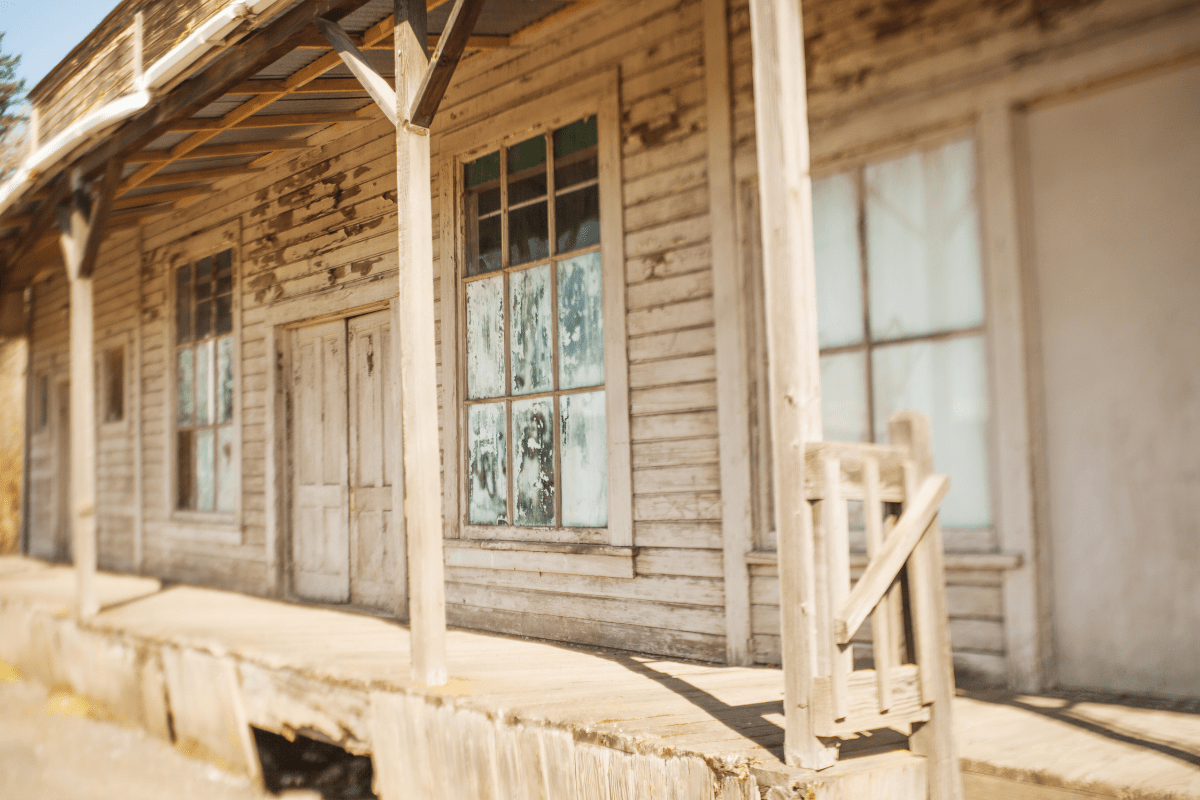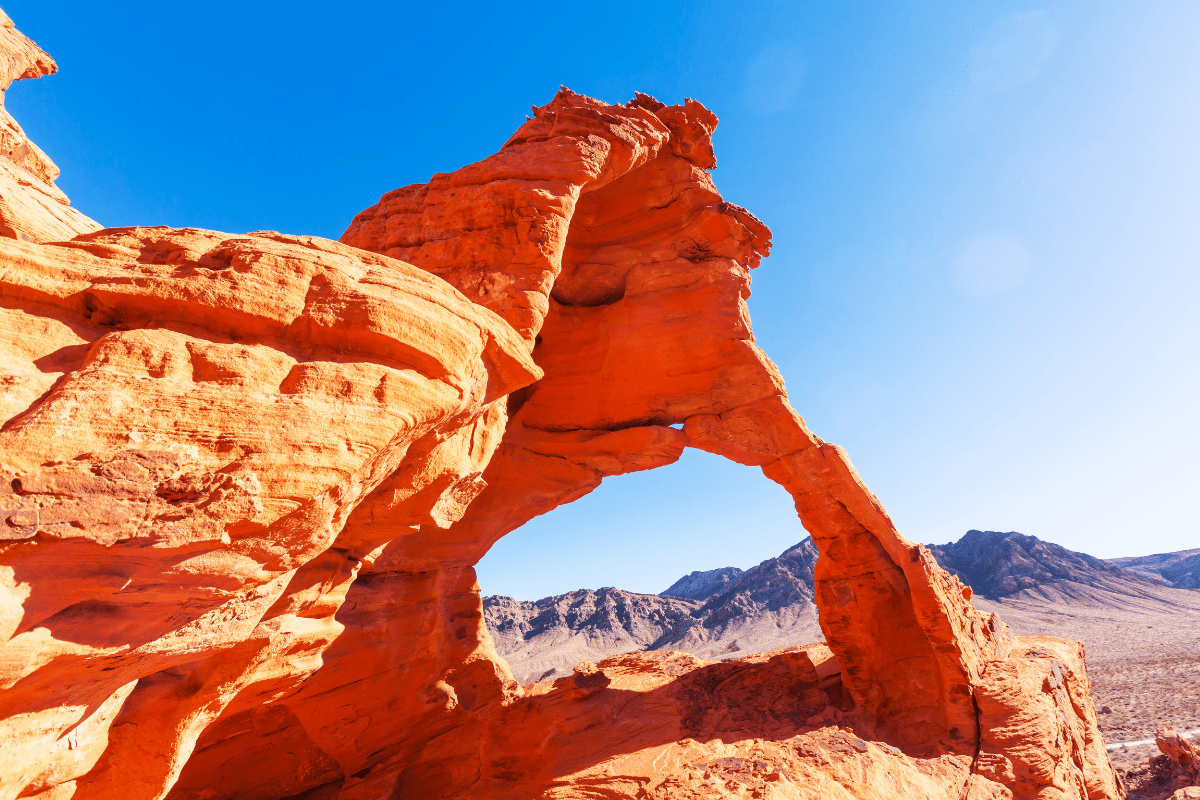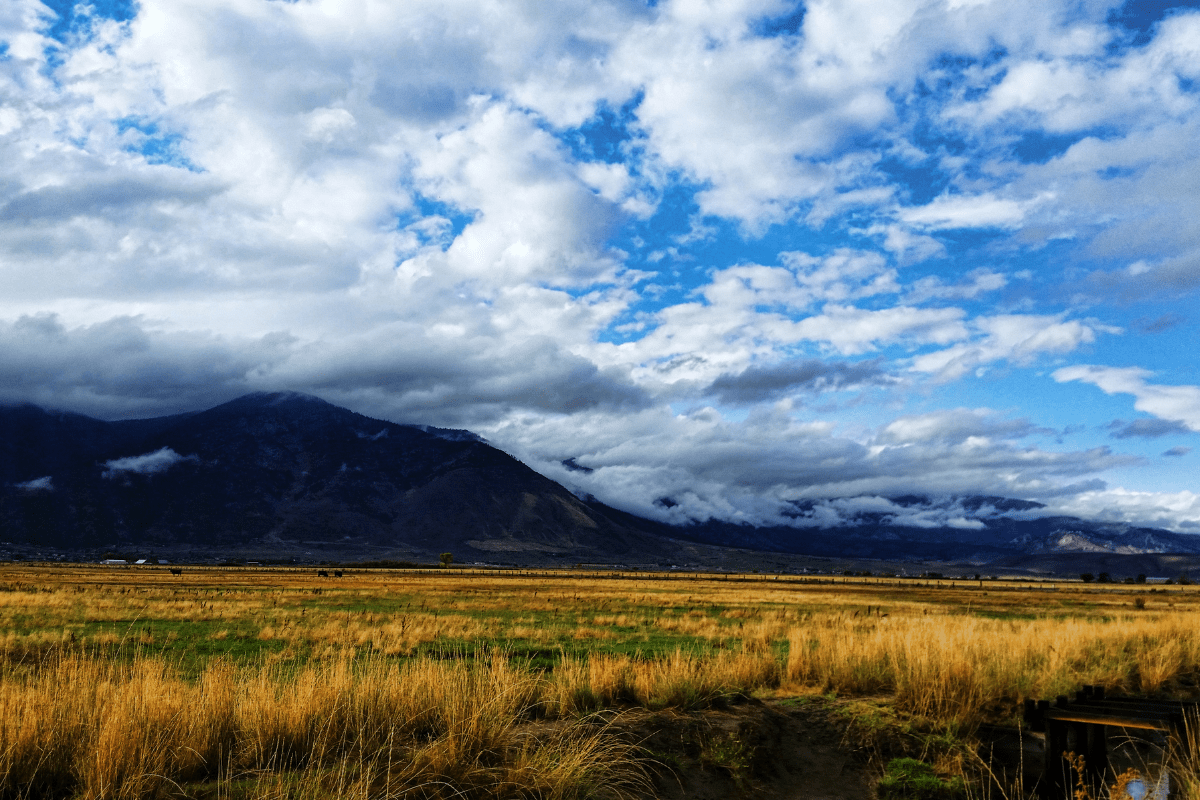Nevada has more ghost towns than actual populated cities, with over 600 abandoned settlements scattered across the desert like forgotten Monopoly pieces from a game that ended badly. These remnants of the mining boom draw over 4 million visitors annually, proving that sometimes the best tourist attractions are the ones where everyone already left.
The easy wins: Ghost towns you can actually reach without destroying your rental car
Let's be honest… most of us aren't driving a lifted Jeep with a winch and a cooler full of emergency supplies. The good news? Nevada's most impressive ghost towns sit right off paved roads, perfect for that spontaneous "let's see something weird" detour.
Rhyolite: The Instagram darling of dead towns
Located just 120 miles northwest of Las Vegas via fully paved roads, Rhyolite serves as Nevada's most photographed ghost town for good reason. The town's three-story bank building ruins look like something from a post-apocalyptic movie set, which explains why it actually has been used as one. Multiple times.
This place went from zero to 6,000 residents between 1904 and 1907, complete with three railroads, four banks, and 50 saloons. Yes, fifty. That's one bar for every 120 people, which might explain why the town collapsed so spectacularly after the Financial Panic of 1907. The famous Tom Kelly Bottle House, constructed from 50,000 beer bottles, suddenly makes more sense when you realize how much drinking was happening here.
Best of all? It's completely free to visit. The BLM occasionally offers guided tours during Nevada Day Weekend, where archaeologists will explain how Charles M. Schwab and other steel magnates lost millions investing in what they thought would become Nevada's permanent mining capital. Spoiler alert: it wasn't.
Nelson: Where Hollywood meets history (for a price)
If Rhyolite is the free sample at Costco, Nelson Ghost Town is the item you actually have to buy. Located 45 minutes south of Las Vegas via paved Highway 165, this privately-operated attraction charges $10 for general admission or $20 if you want to explore the underground Techatticup Mine.
The current owners have turned this place into photographer heaven, strategically placing vintage cars, mining equipment, and movie props throughout the restored buildings. It's basically Instagram: The Theme Park, complete with props from films like "3000 Miles to Graceland." The town has been operating since the 1860s, though back then the main attraction was gold, not selfies. Nelson earned its rough reputation through numerous murders and mining accidents, making it one of Nevada's most violent camps. Today, the biggest danger is probably forgetting to charge your phone before the photo shoot.
Virginia City: The ghost town that refused to die
Thirty minutes from Reno via paved mountain roads sits Virginia City, a town that looked at abandonment and said "nah, we're good." With 900 current residents maintaining over 100 historic buildings, it's less ghost town and more "town that remembers when it was important."
This place was huge… seriously huge. We're talking 25,000 residents in the mid-1870s, making it Nevada's largest city at the time. The Comstock Lode produced over $400 million in silver and gold, which helped finance the Union during the Civil War and built a good chunk of San Francisco. Mark Twain worked here at the Territorial Enterprise newspaper, probably making up stories that were more believable than the actual truth of this wild place.
The town now attracts 2 million visitors annually, who come for ghost tours, mine experiences, and rides on the operational Virginia & Truckee Railroad. Individual attractions charge separate fees, so bring your wallet. The devastating 1875 fire that started at "Crazy Kate's" boardinghouse destroyed most of the original town, causing $10 million in damage and leaving 8,000 people homeless. But like a frontier Phoenix, residents rebuilt with even grander structures, including the six-story International Hotel featuring Nevada's first elevator. Because nothing says "we're not giving up" like installing cutting-edge vertical transportation technology in a mining town.
For the brave: Remote ghost towns that require actual planning
Some ghost towns don't want to be found easily. They're out there in the desert, accessible only to those willing to sacrifice their vehicle's alignment and possibly their sanity.
Hamilton: Where 12,000 people vanished
Getting to Hamilton requires navigating 10 miles of rutted dirt road from Highway 50 that becomes a muddy trap during wet conditions. This isn't a casual Sunday drive… it's a commitment to seeing something truly abandoned.
At its 1869 peak, Hamilton housed 12,000 residents during a silver boom that made it briefly one of Nevada's largest cities. Today, stone walls and brick foundations scatter across hillsides like archaeological breadcrumbs, telling the story of a city that went from boom to bust in about a decade. There's no cell coverage, no services, and the ground around old foundations can be unstable. Bring emergency supplies, including a satellite communicator and enough water to survive if your car decides it's done with this adventure.
Berlin-Ichthyosaur State Park: Come for the ghosts, stay for the prehistoric sea monsters
Located 23 miles east of Gabbs via 20 miles of well-maintained dirt road, Berlin-Ichthyosaur offers a two-for-one special on historical weirdness. For $10 ($5 for Nevada residents), you get access to over 30 preserved buildings maintained in what preservationists call "arrested decay," which sounds like what happens when you try to clean your garage but give up halfway through.
The park sits at 7,000 feet elevation, meaning winter road closures are common and summer is really your only reliable visiting season. But here's the kicker… this ghost town shares space with 225-million-year-old ichthyosaur fossils, North America's most abundant deposit of these marine reptiles. It's probably the only place where you can explore a 30-stamp mill from the 1890s and then go look at the remains of giant prehistoric dolphins. Nevada is weird like that.
The living dead: Ghost towns with a pulse
Not every ghost town got the memo about being abandoned. Some still have residents who've decided that living in a nearly-dead mining town beats paying city prices.
Goldfield: From 30,000 to 300 but still kicking
Goldfield's story reads like a cocaine-fueled fever dream of American capitalism. Between 1902 and 1908, it exploded from empty desert to Nevada's largest city with 30,000 residents. The town produced $11 million in gold in 1906 alone, its peak year.
The Northern Saloon featured an 80-foot bar requiring 80 bartenders during shift changes, because apparently nobody in Goldfield did anything halfway. Today, 300 residents maintain the town, including the reportedly haunted Goldfield Hotel where ghost tours let you search for spirits that probably just want everyone to quiet down and let them rest. The Santa Fe Saloon has been operating since 1905, proving that while gold rushes end, the need for a stiff drink is eternal.
Pioche: Nevada's most murderous mining town
With about 1,000 current residents, Pioche maintains its historic downtown and its reputation as Nevada's most violent ghost town. The statistics are genuinely insane: the first 72 deaths were murders before anyone managed to die of natural causes. In 1871-72, approximately 60% of Nevada's homicides occurred in the Pioche area.
The town's peak population hit 10,000 in 1872, producing $5.5 million in silver that year. But the real legacy is the "Million Dollar Courthouse," where a planned $26,000 project became a corruption scandal of epic proportions. It's still standing, a monument to government inefficiency that makes modern procurement disasters look quaint.
Essential safety info that could save your life (or at least your vacation)
Before you channel your inner Indiana Jones, understand that Nevada's ghost towns aren't theme parks with safety rails and liability insurance.
The state has 31,000 abandoned mine sites containing 66,000 hazardous features. That's not a typo. The BLM's "Stay Out-Stay Alive" campaign exists because people keep falling into mine shafts that can drop 180 feet without warning. A 2024 fatality at the Rex Mine site proved these aren't just theoretical dangers.
Here's your survival checklist for ghost town exploration:
- Water: One gallon per person per day minimum
- Sun protection: Hat, sunscreen, long sleeves
- Emergency supplies: First aid, satellite communicator
- Weather awareness: Check flash flood warnings
- Respect barriers: "No Trespassing" means it
- Leave artifacts: Removal is a federal crime
- Tell someone: Share your planned route
- Bring maps: Cell coverage probably won't exist
Summer temperatures can hit 117°F, making May through September genuinely dangerous for extended outdoor exploration. Winter brings road closures from November through June in mountain areas. Spring and late summer mean flash flood risks in desert washes. Basically, Nevada's weather wants to kill you year-round, so plan accordingly.
The economics of abandonment
These ghost towns aren't just historical curiosities… they're economic engines for rural Nevada. The state's ghost towns contribute significantly to Nevada's $56.8 billion annual tourism economy, with rural counties reporting a 26.6% increase in tourism revenue since pre-pandemic levels.
Central Nevada counties pull 45% of their visitors from California and 12.4% from Arizona, primarily for ghost town and historical site tourism. The Nevada State Historic Preservation Office awards $950,000 annually in restoration grants, contributing over $41 million since 1993 to maintain these historical resources.
Travel Nevada markets ghost towns through its "Get a Little Out There" campaign, positioning them alongside dark sky sites and desert art installations. As director Brenda Scolari puts it, these towns represent "the unexpected experiences and delightful contradictions you can encounter in our state when you get a little out there, beyond the neon lights."
Stories that prove truth beats fiction
Some ghost town histories are so wild they'd be rejected as unrealistic fiction. Take Aurora, which served as the county seat for both California and Nevada from 1861 to 1863 until a federal survey finally figured out which state it was actually in. Spoiler: Nevada won.
The town's 10,000 residents at its 1863 peak operated mills that produced $27 million in gold before an 1866 fire destroyed the commercial district. Mark Twain showed up in 1862 hoping to strike it rich but failed miserably as a miner, beginning his writing career instead. Sometimes failure in Nevada leads to better things.
Harvard-educated historian Shawn Hall captures the surreal nature of these boom-bust cycles: "When I first visited Rhyolite, I went 'Wow.' In 1908, they had a strike and 14,000 people came. The streets were lined with cement and stone buildings. At the time, it was the second largest city in Nevada; four years later it was abandoned."
Planning your ghost town adventure
The best time to visit depends on elevation and your heat tolerance. Lower elevation sites like Rhyolite and Nelson are bearable October through April. Mountain towns like Berlin become accessible May through October. Always check road conditions, especially after rain when dirt roads turn into chocolate pudding.
Start with the easy-access towns near Vegas or Reno to get a feel for ghost town exploration. These offer the best infrastructure, interpretive materials, and cell coverage for when you inevitably need to Google "what kind of snake is this?" Graduate to remote sites only after you're comfortable with desert survival basics and your vehicle's capabilities.
Join online communities of ghost town enthusiasts who share current conditions, GPS coordinates for hard-to-find sites, and warnings about recent hazards. But remember, part of the appeal is the isolation and discovery. These towns died for a reason, and experiencing that remoteness, that sense of dreams turned to dust, is what makes Nevada's ghost towns more than just old buildings in the desert.
Whether you're drawn by history, photography, the paranormal, or just the weird human urge to see where things went wrong, Nevada's ghost towns deliver. They're monuments to ambition, greed, hope, and failure… the most human combination imaginable. Plus, they make for really cool Instagram posts, which is probably what their original residents would have wanted. After all, these were people who built opera houses in the middle of nowhere. They understood the importance of a good show.





